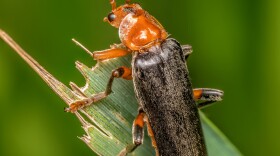When it comes to butterfly migration in the United States, the species best known for making long distance treks is the Monarch.
But there is another, much more globally widespread butterfly whose migration largely flies under the radar – the Painted Lady.
One of the big differences in the Painted Lady’s migration is that it is sporadic. Here in Montana, we may see thousands of them one year and none the next. What gives?
In North America their annual migration is thought to originate in the subtropical regions of northwestern Mexico. When this region receives heavy winter rains, the abundance of vegetation that springs forth enables the butterflies – or more accurately, their hungry caterpillars – to flourish.
However, because the vegetation was successfully munched by so many mouths, in the weeks and months ahead there might be too little food to sustain the next generation of hungry caterpillars. So instead of hanging around to lay their eggs under less than ideal conditions, the butterflies hit the road for greener pastures.
Because conditions fluctuate annually, some years lots of butterflies will migrate.
Some years lots and lots of butterflies will migrate.
And in other years, when winter conditions are not great, they will barely migrate at all, with basically zero butterflies heading as far north as Montana.
Thanks to the fact that Painted Lady caterpillars can happily munch from a wide variety of plants, migrating to new locations poses no problem in finding suitable food sources.
Unlike the Monarch, the extent of a return southern migration is not as well documented, but it is believed that at least a small percentage of butterflies head south when summer begins to fade.





